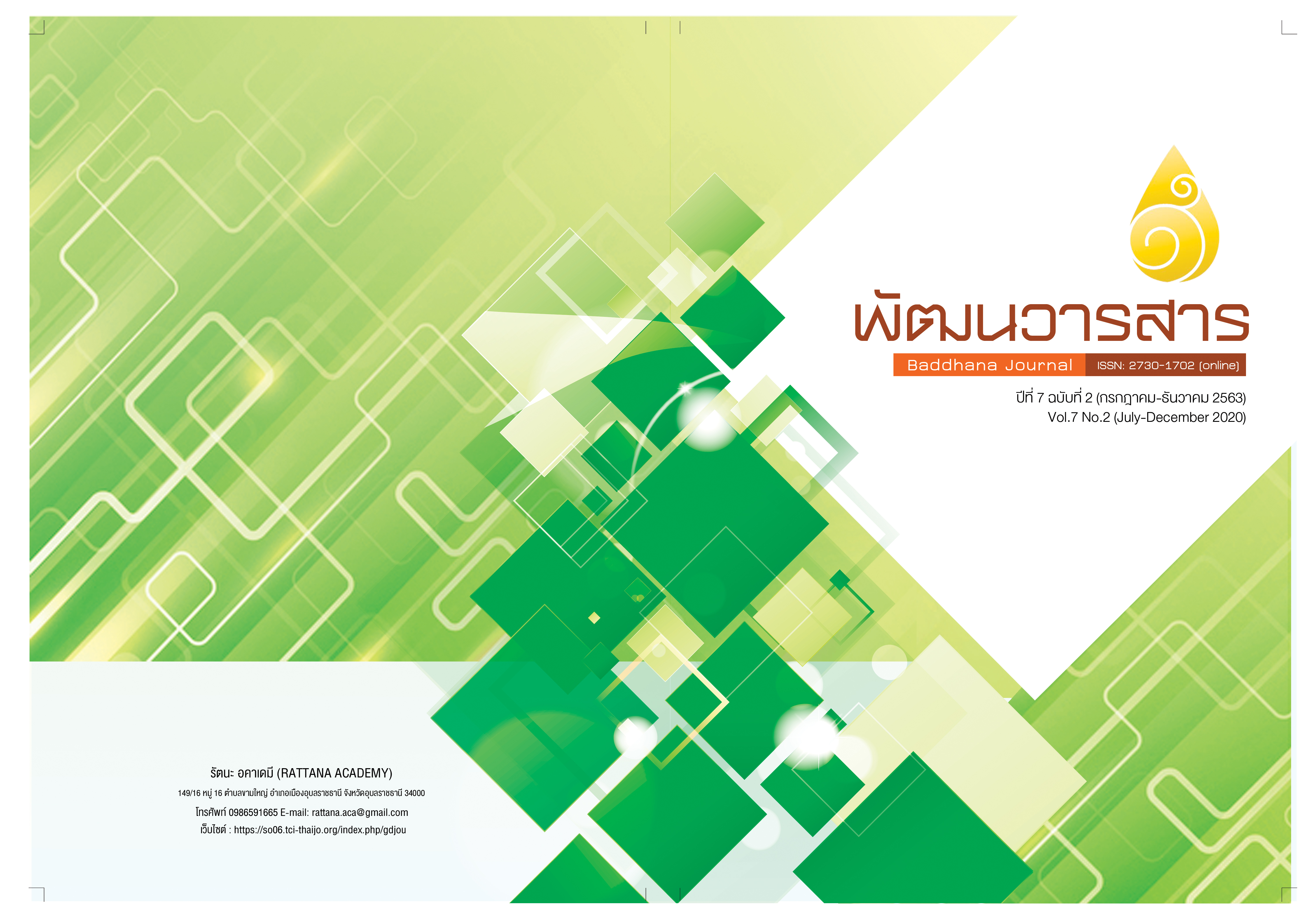Learning Achievement and Attitudes Towards Thai Literature of The Ninth Grade Students by Using Jigsaw Activities and Traditional Teaching Method
Main Article Content
Abstract
The purposes of this research were to 1) compare the learning achievement of Thai literature between students being taught by jigsaw teaching activities, and traditional teaching methods and 2) comparing the attitudes towards Thai literature between students being taught by jigsaw teaching activities traditional teaching methods! The samples in this research were 80 ninth grade students in the first semester of the academic year 2019, Matthayompuranawat School, divided into 40 students of experimental group which organized learning by jigsaw teaching and learning activities and 40 subjects of control group which organized learning by traditional teaching methods. The researcher conducted the learning by himself for both groups of students in 6 weeks; 3 lessons per week, totally 18 lessons. Research instruments included 1) The tools used in the experiment were the learning plans for Thai literature by using jigsaw teaching and learning activities and the lesson plan for learning Thai literature by using traditional teaching method and 2) The tools used for data collection were tests of achievement in Thai literature. And the questionnaire on attitudes towards Thai literature The statistics used in the data analysis process were finding the mean ( ) and standard deviation (SD) and t-test. The results showed that 1) Students who learned by using jigsaw teaching activities had higher learning achievement in Thai literature than students who learned by using traditional teaching methods with statistical significance. at the level of .05 and 2) Students who learned by using jigsaw teaching activities had no higher attitude towards Thai literature than students who learned by using traditional teaching method.
Article Details
References
ณัฐธีรา กมลเลิศ. (2555). การศึกษาผลสัมฤทธิ์ทางการเรียนรายวิชาวิทยาศาสตร์พื้นฐานเรื่องสารและสมบัติของสารที่ได้รับการสอนโดยวิธีการเรียนแบบร่วมมือ (เทคนิคการสอนแบบ jigsaw ของนักศึกษาประกาศนียบัตรวิชาชีพ ชั้นปีที่ 1. สุราษฎร์ธานี: วิทยาลัยอาชีวศึกษาอาชีวศิลป์.
ปฐมพงษ์ บานฤทัย. (2560). การจัดการเรียนรู้แบบร่วมมือ (Jigsaw) เรื่อง การเมืองการปกครองสมัยอยุธยากลุ่มสาระสังคมศึกษา ศาสนาและวัฒนธรรม ชั้นมัธยมศึกษาปีที่ 2. วิทยานิพนธ์ครุศาสตรมหาบัณฑิต มหาวิทยาลัยราชภัฏมหาสารคาม.
ศิริดา บุรชาติ. (2560). ผลการทดสอบทางการศึกษาระดับชาติขั้นพื้นฐาน (โอเน็ต). (ออนไลน์) 2560 (อ้างเมื่อ 25 มีนาคม 2562). จาก: www.niets.or.th niets.or.th
อุไรวรรณ วรกุลรังสรรค์. (2557). การพัฒนาทักษะการคิดด้วยเทคนิคจิกซอว์ 2. การค้นคว้าแบบอิสระ. วิทยานิพนธ์ครุศาสตรมหาบัณฑิต คณะศิลปะศาสตร์ สถาบันการพลศึกษา วิทยาเขตชุมพร.
Aronson, E. & other. (1978). The Jigsaw Classroom. Beverly Hills, CA : Sage.
Likert, R. A.. (2017). New Patterns of Management. New York: McGraw-Hill Book Company Inc, 5(3); 2017, 100-107.


